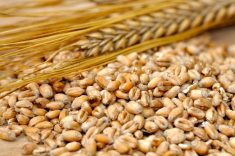There were no feeder cattle sales last week due to the holiday season; however, this didn’t stop many cow-calf producers from inquiring about the market outlook for 2022.
This past year was one for the record books. There is no doubt about it. Waves of COVID-19 caused beef demand to be quite volatile from month to month. The drought in summer resulted in record-high barley prices and significant herd liquidation. Looking forward, we’re very optimistic for feeder cattle prices for three main reasons.
Beef packers on both sides of the border have been pushing operating capacity to the limits, resulting in historically high North American beef production. Despite the larger supplies of beef, beef demand has been exceeding expectations in both domestic and export markets. Market-ready supplies of fed cattle have exceeded slaughter capacity at times in 2021. This will change in 2022. Capacity will exceed market-ready fed cattle supplies and we’ll see stronger fed cattle prices. U.S. beef production will experience a sharp year-over-year decline in the latter half of 2022 due to lower supplies of market-ready cattle. This will allow feedlots to bid up the price of feeder cattle.
Read Also

U.S. livestock: Feeder cattle hit contract highs on tight supply
Chicago | Reuters – All Chicago Mercantile Exchange feeder cattle futures and most live cattle futures hit contract highs on…
The cattle complex has been in a contraction phase over the past three years. The U.S. beef cow slaughter will likely finish near historical highs for 2021. The U.S. calf crop has been shrinking since the latter half of 2018. The market will function to encourage expansion in 2022. Cow slaughter will decline in the first half of the year. During the second half of the 2022, we’ll significant heifer retention, which will result in lower supplies for feedlot placements.
Feed grain prices in Western Canada will stay at historical highs until harvest. The La Nina phenomenon over the Pacific Ocean tends to result in average to below-average temperatures and average to above-average precipitation during the Canadian growing season. Some weather analysts suggest that western Canadian weather occurs in 18-year cycles. Many cattle producers remember the summer of 2004 as cold and wet. Current barley prices in the Lethbridge area are in the range of $445-$455 per tonne delivered. New-crop prices are quoted at $340-$350 per tonne delivered.
There are always “black swan” variables that can influence the market. Therefore, it’s important that cattle producers stay up to date with the weekly market reports on this website. We’ll be monitoring the factors. We’re also provide timely feeder cattle price information. This will help producers plan their marketing strategy to maximize returns in 2022.
— Jerry Klassen is president and founder of Resilient Capital, specializing in proprietary commodity futures trading and market analysis. Jerry consults with feedlots on risk management and writes a weekly cattle market commentary. He can be reached at 204-504-8339 or via his website at ResilCapital.com.















